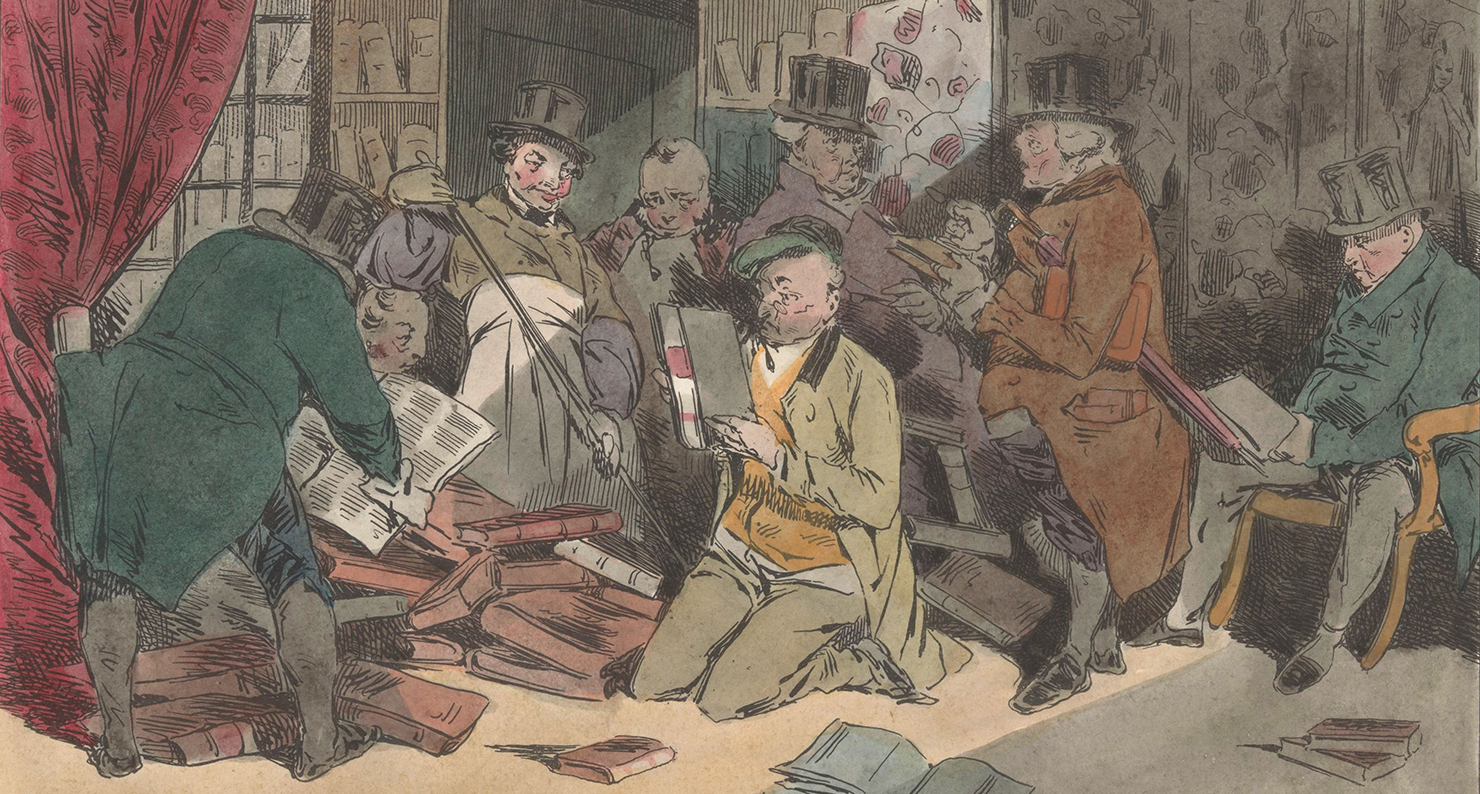From Western Sydney University:
Mapping the Trade of the Société Typographique de Neuchâtel, 1769-1794
About
This project uses database technology to map the French book trade across late-Enlightenment Europe, between 1769 and 1794. It charts best-selling texts and authors; reading tastes across Europe; changing patterns of demand over time; and networks of exchange in the print-trade.
The business of books in 1778 France, as seen by a sales representative for a Swiss publishing house.

Book Dealers Inspect a Library, by Henri Bonaventure Monnier, 1829. Rijksmuseum.
One way to get to know a sales rep is to study his expense account. Jean-François Favarger’s expenses, calculated carefully in the French currency of livres, sous, and deniers, appear at the end of his diary. They provide a preview of his journey.
Before setting out on his horse, he had his coat repaired: 1 livre, 3 sous disbursed in La Neuveville, his hometown, ten miles north of Neuchâtel, on July 3, 1778, two days before he took to the road. The garment probably was a redingote (riding coat), a solid piece of cloth waxed to withstand rain, not at all comparable to the finery that gentlemen wore, with fancy trimming and double rows of well-wrought buttons. Favarger needed protection from the elements. They were kind to him on the first leg of the journey. But in August, when he reached the lower valley of the Rhône, the sun beat down on him relentlessly and the redingote probably was tied across his saddlebags. Favarger encountered very little water, even in riverbeds, until September 6, when he entered Carcassonne.
Then it began to pour. From Toulouse to La Rochelle, it hardly stopped. Favarger had to buy a new hat: 10 livres. And he had put up with so much friction in the saddle that he also had to purchase a new pair of breeches: 26 livres, both for the breeches and for a quilt to get him through the chilly nights that set in at the beginning of October. The roads were then so muddy that his horse slipped and fell several times a day. He took to leading it by the bridle and walked so far under such bad conditions that he wore through his boots: 3 livres, 3 sous for resoling. Sweating under the summer sun in Languedoc and shivering through the autumn muck in Poitou, Favarger did not cut much of a figure on the road. He probably smelled when he arrived at country inns. Only twice on the entire circuit did he enter expenses for laundry: 1 livre, 10 sous in Toulouse and 1 livre, 4 sous in Tonneins—the rough equivalent each time of a day’s wages for one of the Société typographique de Neuchâtel’s printers. He carried a hunting knife and a brace of pistols, which he had worked over by a gunsmith in Marseilles—10 sous—after being warned about highwaymen on the road to Toulon.
Not that Favarger looked like a highwayman himself, despite the dirt and dust that accumulated on his redingote. He had to be presentable when he walked into a well-appointed bookshop on the high street of a city. After his arrival in Lyon, he bought himself a suit with a waistcoat: 23 livres, 4 sous, 6 deniers for fabric (“voile” or light cotton) and tailoring. That was an important sum for a clerk—5 percent of his annual wages—but not an extravagance. Further along his route he treated himself twice to ribbons (12 sous each) for binding the tress of hair that he wore down the back of his neck....
....MUCH MORE